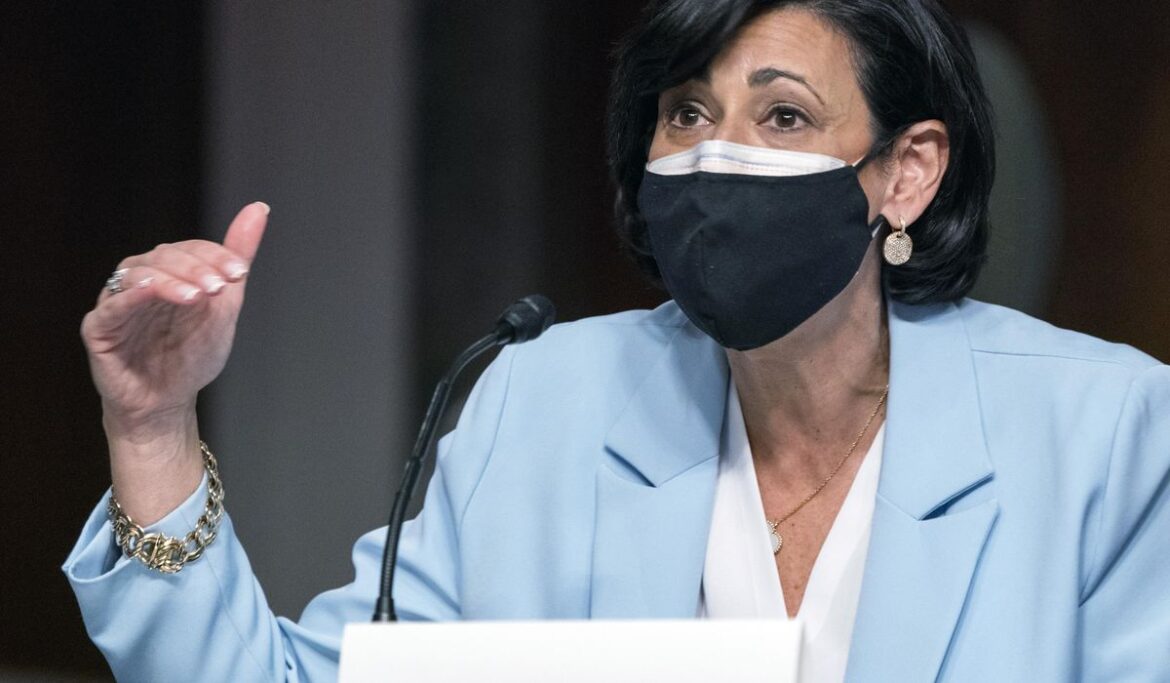
The Centers for Disease Control and Prevention significantly relaxed its mask guidance in a major update to its COVID-19 rules Friday, pivoting to a system in which severe disease and hospital capacity are key factors instead of case counts and positivity rates alone.
The change means that 71% of Americans live in parts of the U.S. where the CDC no longer recommends universal masking.
The new, three-tiered system advises all people to wear a mask indoors if their county is considered “high” risk due to a significant number of patients, fewer available hospitals beds and elevated transmission — a description that applies to 37% of counties. The previous guidance, which looked at transmission alone, applied to 95% of the country.
Just shy of 40% of counties fall into a medium category, in which the CDC said high-risk persons such as the immunocompromised wear a mask, while 23% of counties are in the lowest category and don’t need to mask.
Officials said the easing omicron surge and high levels of immunity around the nation prodded them to take a more holistic view of guidance, as leaders attempt to pivot from a hair-on-fire pandemic phase to treating the virus as something that needs to be managed like other infectious diseases.
“It’s not just cases, it is cases as well as hospitalization as well as hospital burden. It is the intersection of all of them,” CDC Director Rochelle Walensky said.
She said the idea is to “give people a break” from masking when things are mild and “to reach for them again should things get worse in the future,” such as the advent of a new, dangerous variant.
In making the change, the CDC pointed to the more than 200 million people who’ve received a primary vaccine series, more than 100 million who got a booster and millions more who have some form of natural immunity from prior infection.
“We’re in a stronger place today as a nation,” Dr. Walensky said. “The overall risk of severe disease is now generally lower.”
Before the update, the CDC had advised people to wear masks indoors in counties with high or substantial transmission — a designation that covered nearly all of the country. It also recommended universal masking in K-12 no matter the level of local transmission.
Now, the CDC said only schools in the high-risk category should feel the need to mask up.
The CDC plans to update its map with counties and their risk level on its website weekly for the foreseeable future.
The current map shows low risk in the New York City area, Bay Area of California, pockets of Texas and states across the Midwest and Mountain West. The highest risk areas are Appalachian states like Kentucky and West Virginia.
The CDC is playing catchup after blue states, cruise lines and retailers raced ahead of the federal agency and decided to lift mask mandates or let them expire. The disconnect between state rules and the CDC placed the federal agency in an awkward spot, because its guidance often serves as the template for state and local policy.
The long-awaited update was large overshadowed Friday by the war in Ukraine and President Biden’s selection of a Supreme Court nominee. It also remains to be seen whether the CDC’s update will cause major changes among local leaders and business executives who’ve outlined their own plans, though it may guide individual behavior.
Case counts of more than 70,000 per day remain higher than during many parts of the pandemic but are declining rapidly from the peak of 800,000 in mid-January. The dominant omicron variant is highly transmissible but considered less likely to cause severe disease.
The decision to relax guidance is likely to be met with both sighs of relief from a pandemic-weary public and concern from persons who say society must remain vigilant against the virus, particularly since children under 5 aren’t eligible for a vaccine yet.
“Some people may choose to wear [masks] at any time based on personal preference,” said Greta Massetti, a CDC scientist on the COVID-19 Response Incident Management Team.
Masks have been an enduring feature of the pandemic fight after vaccines did not rein in viral transmission as much as initially hoped.
Mandates on the covering became a symbol of government overreach for some critics, especially when it comes to rules on school children. The CDC in January recommended higher-grade N95 or KN95 masks after many people spent much of the pandemic relying on cloth masks.
Dr. Walensky said the guidance for communities released Friday is separate from an order that requires masking on public transportation, which will expire in mid-March unless the government extends it.
“We will be revisiting that in the months ahead,” she said.
For more information, visit The Washington Times COVID-19 resource page.





